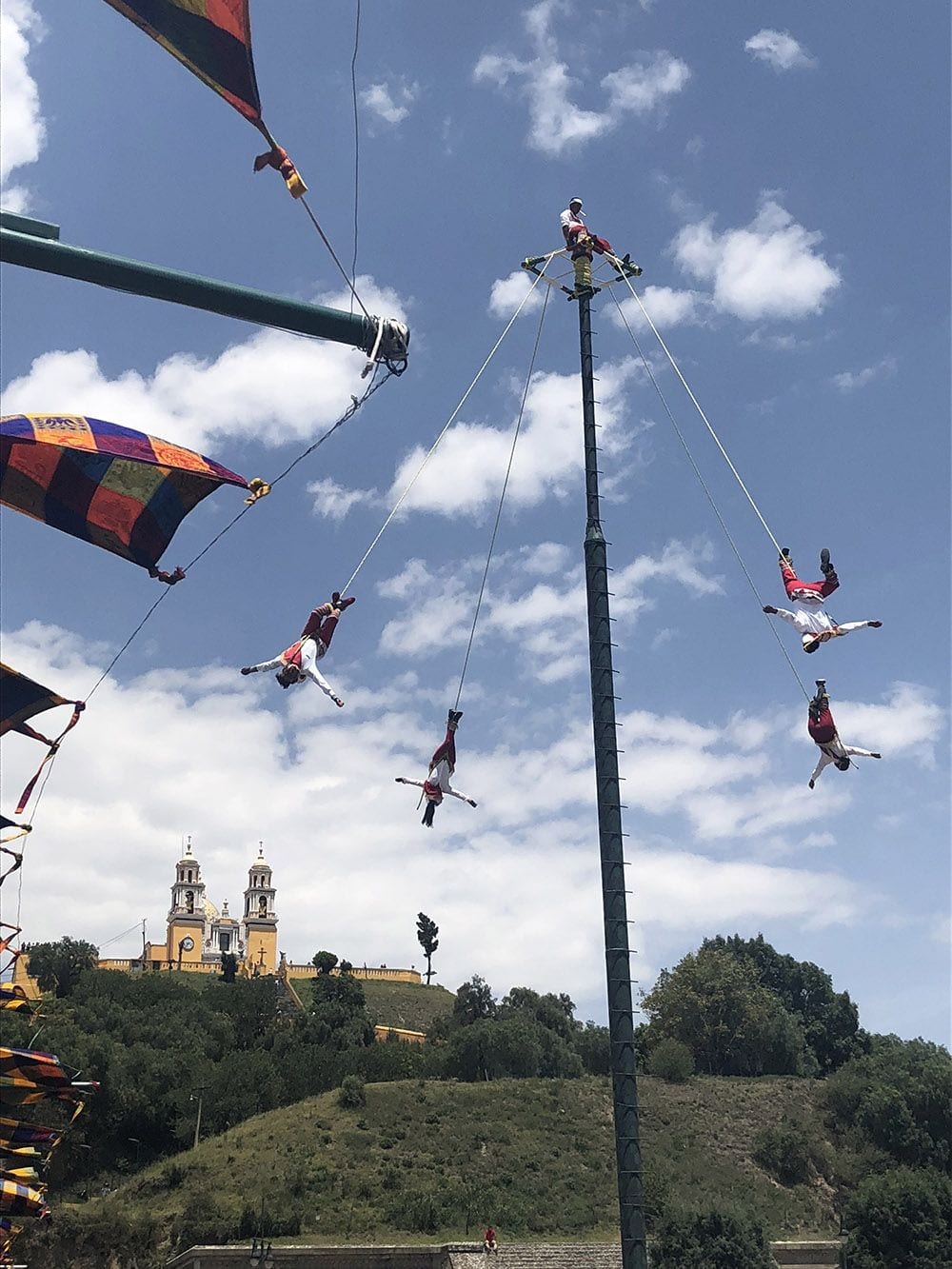Honors chemical engineering major Meagan Olsen spent her summer in Puebla, Mexico, studying Spanish and participating in an engineering-based service project. Here, she blends language-learning, history, tradition and community, using a color palette that is at once eye-opening and relatable.
The first thing I noticed about Mexico was the color. As our plane glided into the airport, I focused on the red roofs sprawling throughout Mexico City. The two-hour bus ride to my new home in Puebla showcased art on every corner: murals, graffiti, statues, fountains and houses with vivid paint. It seemed to be a defining aspect of the culture, starting with the pre-Hispanic people and their cities, now gray but once bursting with color and decoration. The longer I stayed, the more I came to appreciate that color. It isn’t just in the art, but in the language, the food, the environment and the people.
My host mother took me to a local market on my first weekend. Under the patchwork of bright blue and off-white tarps, everything was sold, from traditional talavera pottery to hand-carved utensils. This market environment repeated itself in every city. In Cuetzalan, indigenous people sold shirts blooming with embroidered flowers alongside piles of coffee and fruit. In Oaxaca, stalls overflowing with rainbows of beaded animals bordered the zócalo. Even in the center of Mexico City, the feeling of traditional markets remained in the small shops lining every street. That echo of tradition resonated in every street and every building.
In a way, the colors formed a language much older than those spoken around me. They told stories and illuminated history. The longer I was surrounded by Spanish, the more I related the language to art. I could mix phrases and shift word order to make a sentence exactly what I wanted. My professor taught me how to take the initial grammar and vocabulary and turn them into statements I could be proud of. Through conversations, articles and TV shows, the line between teacher and family member blended to ensure that I learned just as much outside of class as I did in class.
I went to Puebla to improve my Spanish and learn how to discuss engineering topics in a different language. The opportunity to participate in an engineering-related service learning placement was why I chose to study in Mexico over other Spanish-speaking countries, but engineering ended up being the least important aspect of the trip. Instead, each day I travelled to new places throughout the country, even if only through a conversation or news broadcast. I tried traditional foods like mole, tlayoyos and pozole. I cheered for Mexico during World Cup games that took precedence over everything else. I immersed myself in the culture surrounding me and learned more about Mexico and its people than I ever expected. Above all, I gained a new respect for language, its challenges and its beauty.
During my last week, I went to El Parían. The Poblano artists’ market was nestled between buildings near the zócalo; although unassuming from the outside, each stall arranged around the mosaic-like stone floors leaked color. Talavera pottery peeked out from every corner, the orange and blue swirls forming patterns and movement. Although this market was no different than any other market we had gone to, it felt very different. For the first time, I felt comfortable. I easily spoke Spanish to the shopkeepers, laughing at their jokes and asking questions about their goods. I let myself blend with the colors and words around me, instead of standing on the outside. To me, this was the biggest result of my study abroad in Puebla. I became confident in my language abilities. I learned to become a part of the art instead of only an admirer.
My advice to anyone planning on traveling abroad is to embrace the unique atmosphere around you. It’s easy to forget how intertwined every aspect of life is when you study them from the outside. By participating rather than observing, I was able to appreciate the complexities of Mexican culture and the beauty of language. However, the shift from observer to participant is never easy. You will be uncomfortable. You will be confused. If you’re learning a new language, you will likely be frustrated at your inability to express yourself. I spent the first weeks in Puebla focusing on these negative things. The moment I allowed myself to relax, I began to learn and truly live in the unique culture. To discover the colors around you, you must stop trying to find them.



